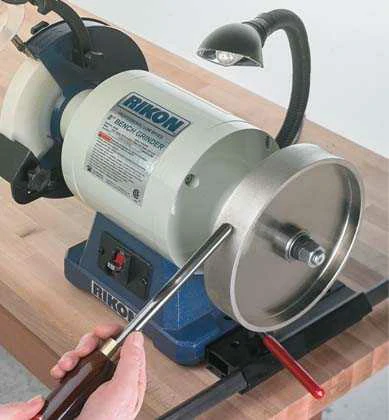Diamond crushing material, also known as diamond micron powder or diamond micro-powder, refers to synthetic diamond particles with a particle size of less than 36/54 microns. Due to its excellent hardness and wear resistance, diamond crushing material has become an essential component in various industrial applications. One of its significant uses is in the manufacturing of grinding wheels. In this article, we will explore the application of diamond crushing material on grinding wheels and discuss its benefits and potential challenges.
Enhanced Grinding Performance
Grinding wheels are widely used in industries such as manufacturing, automotive, aerospace, and metalworking. They are critical tools for shaping, smoothing, and polishing various materials. The addition of diamond crushing material to grinding wheels greatly enhances their grinding performance. Diamond has the highest hardness and thermal conductivity among all materials known to man. This characteristic allows diamond crushing material to effectively grind even the toughest materials, including hardened steel, ceramics, and glass. The superior hardness and wear resistance of diamond particles make grinding wheels more durable and long-lasting.
Improved Surface Finish
When grinding materials, achieving a smooth and polished surface finish is often crucial. Diamond crushing material plays a crucial role in achieving this desired surface finish. The sharp edges and high cutting efficiency of diamond particles enable grinding wheels to remove material quickly and evenly from the workpiece surface, resulting in a smoother finish. Additionally, the unique self-sharpening property of diamond ensures that the grinding wheel maintains its cutting performance for an extended period, further contributing to an improved surface finish.
Reduced Heat Generation
Heat generation during grinding can be detrimental to both the workpiece and the grinding wheel. Excessive heat can lead to thermal damage, such as material deformation or cracking. Diamond crushing material helps address this issue by efficiently dissipating heat during the grinding process. The high thermal conductivity of diamond particles allows heat to be quickly conducted away from the grinding zone, reducing the risk of thermal damage. This characteristic is particularly advantageous when grinding heat-sensitive materials, such as certain plastics or composites.
Challenges and Considerations
While the application of diamond crushing material on grinding wheels offers numerous benefits, some challenges and considerations need to be addressed. First, the cost of diamond crushing material is relatively high compared to traditional abrasive grains. However, the increased longevity and improved performance of grinding wheels justified this investment in many industrial applications. Second, the selection and proper distribution of diamond particles within the grinding wheel matrix require careful consideration to achieve optimal grinding performance. Lastly, the compatibility of diamond crushing material with different bond types and grinding conditions must be evaluated to ensure satisfactory results.
Conclusion
The application of diamond crushing material on grinding wheels has revolutionized the field of grinding technology. The enhanced grinding performance, improved surface finish, and reduced heat generation offered by diamond particles make them invaluable in various industries. While challenges exist, the benefits justify the investment in diamond crushing material. With further advancements and research, we can expect continuous improvements in grinding wheel technology, leading to more efficient and precise grinding processes in the future.



